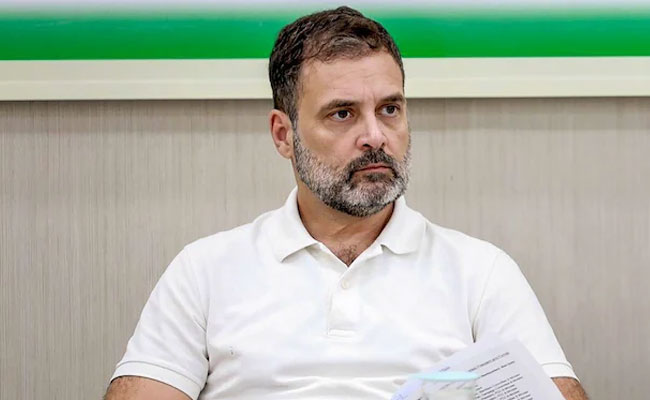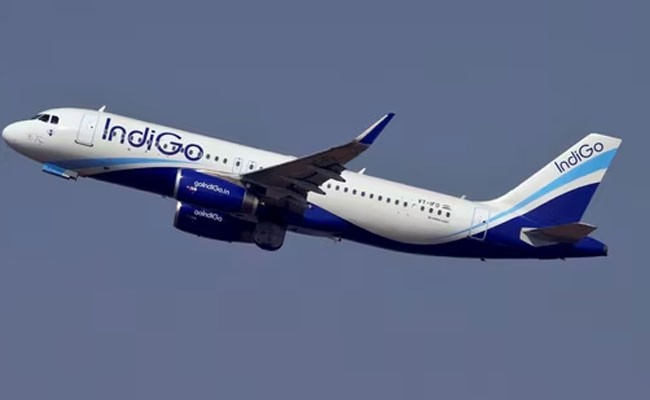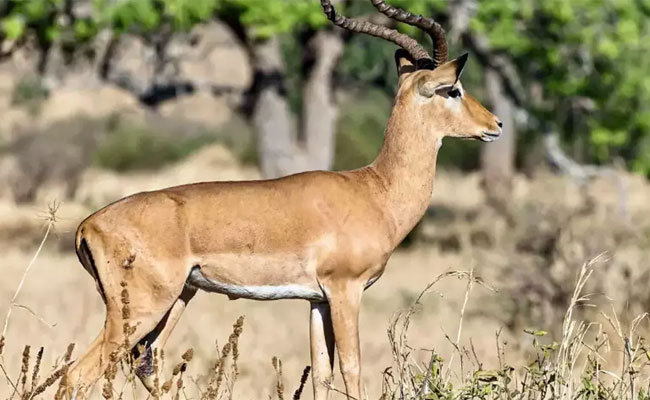Washington : The Trump administration will leave 200 US troops in Syria to act as a "small peacekeeping group", the White House has announced following President Donald Trump's order for a "full" withdrawal of the American military from the war-torn country.
The White House announced the decision on Thursday after Trump spoke with Turkish President Recep Tayyip Erdogan over the phone.
"A small peacekeeping group of about 200 will remain in Syria for a period of time," White House Press Secretary Sarah Sanders said in a statement after the call between the two leaders.
In December, Trump abruptly declared victory against the Islamic State (ISIS) in Iraq and Syria and announced that the more than 2,000 US troops in Syria would be withdrawn immediately.
The president ordered staff to execute the "full" and "rapid" withdrawal of US military from Syria, declaring that the US had defeated ISIS.
The administration has since changed its timeline and said that it will seek a withdrawal of most troops by the end of April.
Trump's surprise decision prompted the resignation of former Defense Secretary James Mattis and the president has since received strong pushback from lawmakers who worry the Syrian Democratic Forces (SDF) Kurdish forces who helped in the fight against ISIS would be threatened by Turkey without US protection.
According a White House readout of the call, the two leaders underscored the importance of the bilateral relationship and discussed a number of issues including Syria and trade.
"On Syria, the two Presidents agreed to continue coordinating on the creation of a potential safe zone," the White House said.
Acting Secretary of Defense Patrick Shanahan and Chairman of the Joint Chiefs General Joseph Dunford will be hosting their Turkish counterparts in Washington this week for further talks.
Senator Lindsay Graham praised Trump for his decision to leave 200 American troops in Syria as part of an international stabilising force.
"This will ensure ISIS does not return and Iran does not fill the vacuum that would have been left if we completely withdrew. This also ensures Turkey and SDF elements that helped us defeat ISIS will not go into conflict," Graham said.
Currently the US has some 2,000 troops in Syria.
The US troop withdrawal has left America's Kurdish allies vulnerable to an attack from Turkey. Ankara views the Kurdish forces as terrorists aligned with insurgents inside Turkey.
Last month, Trump threatened to "devastate" Turkey economically if the NATO-allied nation attacks US-backed Kurdish forces in Syria following the US pullout and also urged the Kurds not to "provoke" Ankara.
Ground troops first arrived in Syria in autumn 2015 when then-President Barack Obama sent in a small number of special forces to train and advise YPG fighters.
A peaceful uprising against the president of Syria President Bashar al-Assad seven years ago turned into a full-scale civil war. The conflict has left more than 350,000 people dead, devastated cities and drawn in other countries.
Let the Truth be known. If you read VB and like VB, please be a VB Supporter and Help us deliver the Truth to one and all.
New Delhi (PTI): The Congress on Sunday demanded a comprehensive investigation and strict accountability for the tragic fire at a nightclub in Goa that killed 25 people, with Rahul Gandhi claiming it was a criminal failure of safety and governance.
The fire broke out at Birch by Romeo Lane, a popular nightclub at Arpora village in North Goa, early Sunday, killing at least 25 people, including four tourists and 14 staff members, and injuring six others.
Congress president Mallikarjun Kharge expressed his deepest condolences to those who lost their loved ones in the blaze.
“This avoidable tragic incident is an irreparable loss, and I pray for the speedy recovery of all those who have been injured.
ALSO READ: https://english.varthabharati.in/india/25-killed-6-injured-in-fire-at-nightclub-in-goa
“Such tragedies call for a comprehensive investigation, strict accountability, and immediate steps to ensure that all fire safety norms are enforced, so that such devastating incidents are never repeated,” Kharge said in a post on X.
The veteran leader also appealed to all the Congress workers in the coastal region to extend every possible support and assistance to the affected families and stand with them in this hour of grief.
Rahul Gandhi, the Leader of Opposition in Lok Sabha, said he was deeply pained by the tragic fire in Arpora.
“My heartfelt condolences to the bereaved families and wishes for the speedy recovery of the injured. This is not just an accident; it is a criminal failure of safety and governance. A thorough, transparent probe must fix accountability and ensure such preventable tragedies don't occur again,” Gandhi said in an X post.
Congress general secretary in charge of organisation, K C Venugopal, sought fixing of accountability for the tragic blaze so that such incidents are not repeated.
"The fire at a night club in Arpora, Goa, is shocking and I convey my heartfelt sympathies to the families of the victims who lost their lives.
"This tragedy took place because of the negligence of the authorities in enforcing fire safety norms. We urge a thorough and impartial investigation to identify those responsible and to ensure accountability, so that such a tragedy is never repeated," he said in a post on X.
Deeply pained by the tragic fire in Arpora, Goa that claimed more than 20 lives. My heartfelt condolences to the bereaved families and wishes for the speedy recovery of the injured.
— Rahul Gandhi (@RahulGandhi) December 7, 2025
This is not just an accident, it is a criminal failure of safety and governance. A thorough,…





